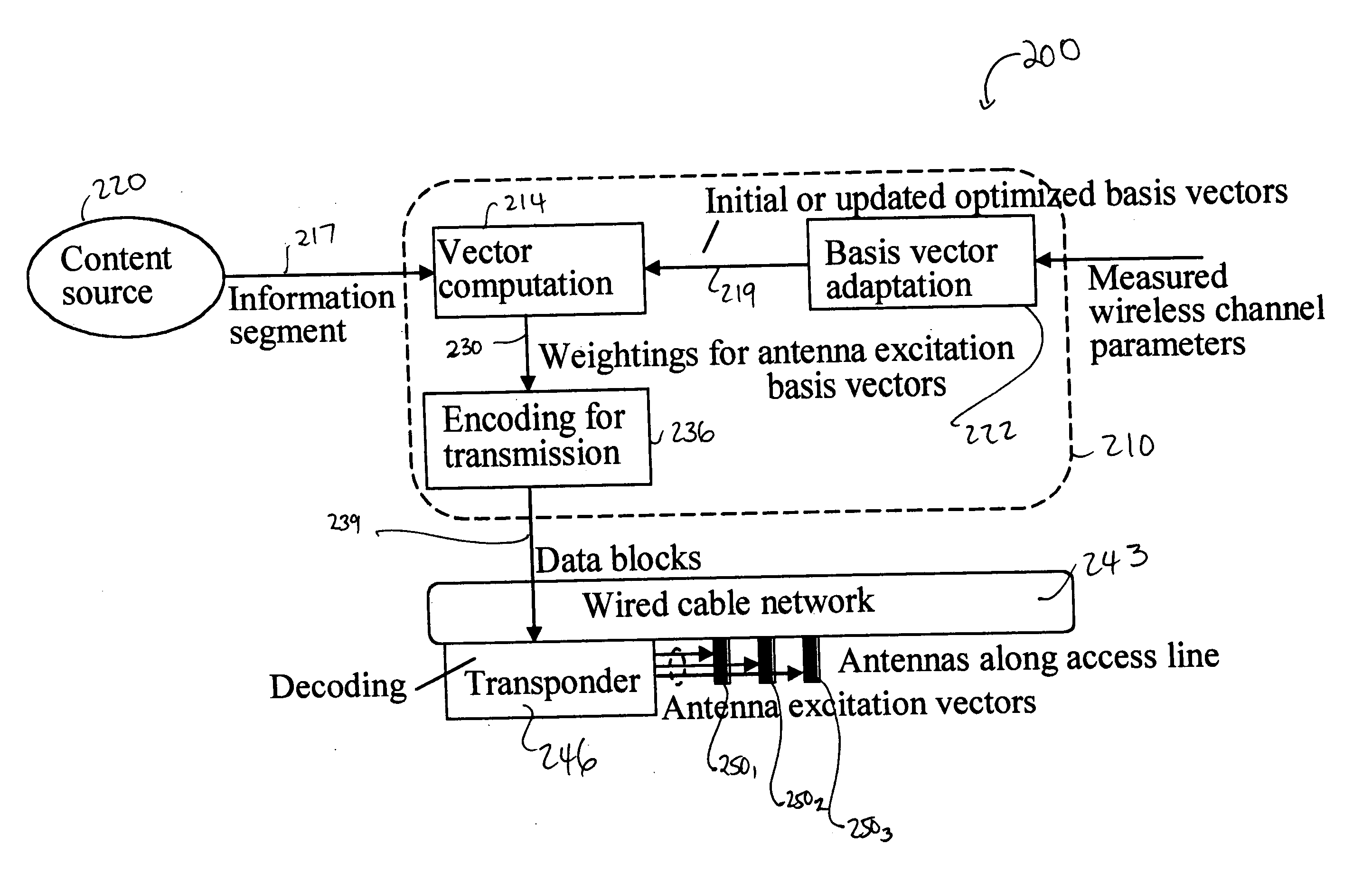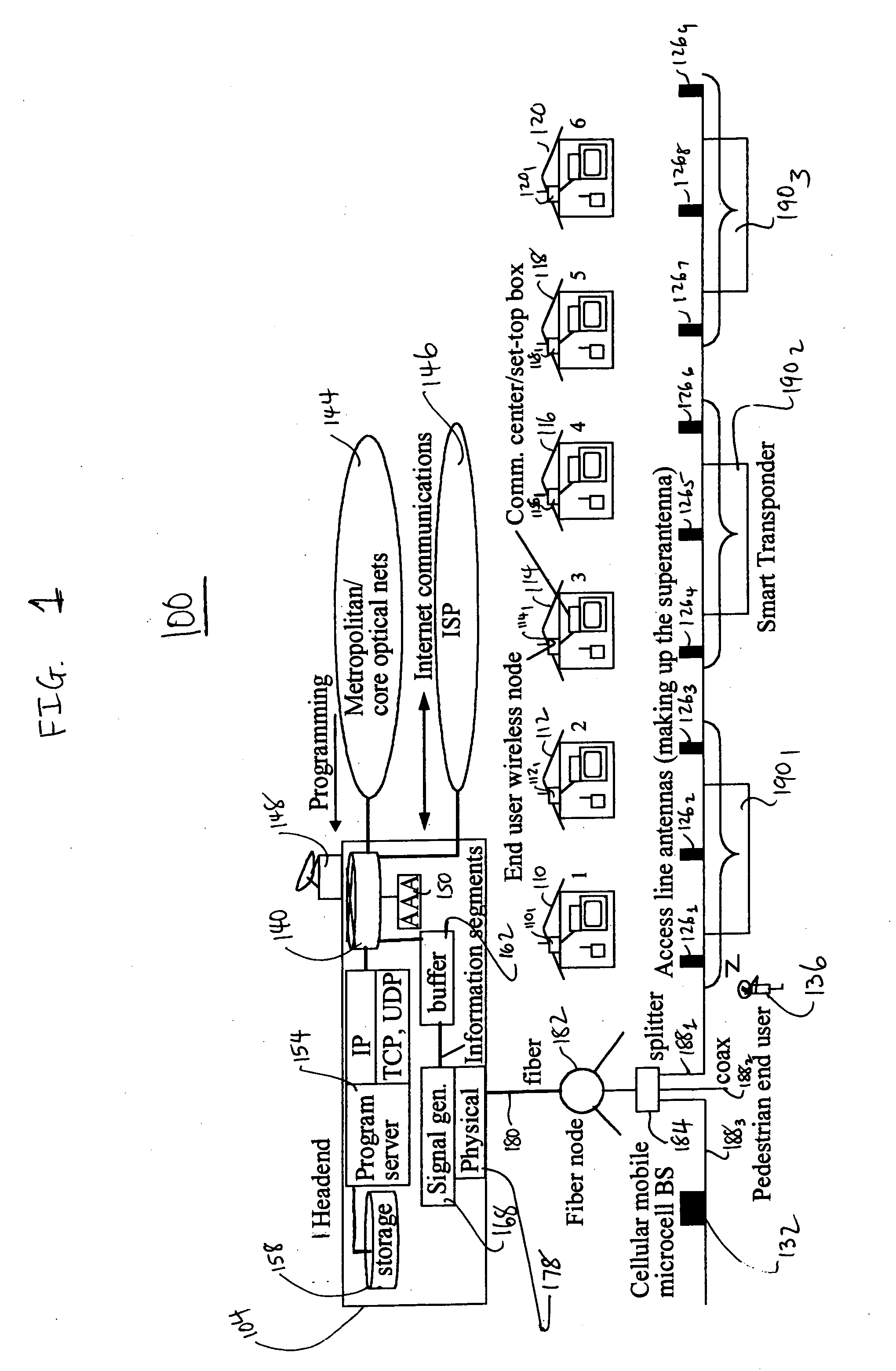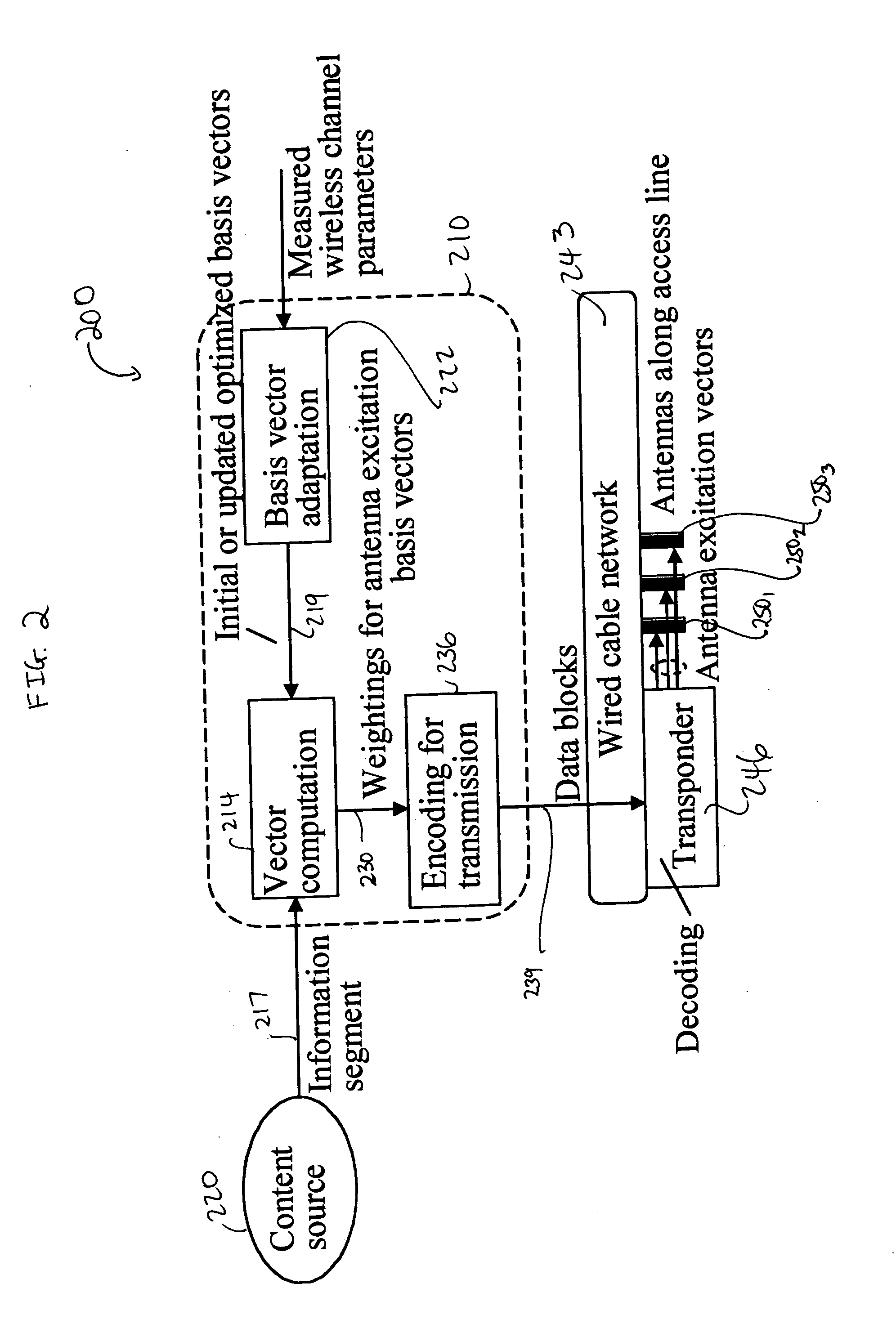Flexible transport system including support for bilateral user access
a technology of user access and transport system, applied in the direction of site diversity, electromagnetic wave modulation, wireless commuication services, etc., can solve the problems of system enhancement of existing cable distribution system, unmatched potential for new media applications, and multimedia internet development, and achieve the effect of reducing radio interferen
- Summary
- Abstract
- Description
- Claims
- Application Information
AI Technical Summary
Benefits of technology
Problems solved by technology
Method used
Image
Examples
Embodiment Construction
[0039]FIG. 1 illustrates a system 100 in accordance with an aspect of the present invention. The system comprises a headend 104 that preferably transmits programming information to a plurality of end user / subscriber locations 110, 112, 114, 116, 118 and 120 using a plurality of access line antennas 126. A subscriber node 1101, 1121, 1141, etc., is provided at each subscribe location in accordance with an aspect of the present invention. In addition, the system 100 may also desirably include a cellular mobile base station 132 that supports mobile end users, such as for example mobile end user 136.
[0040] As shown in FIG. 1, the headend 104 comprises a routing module 140 that is coupled to metropolitan or optical network 144, internet service provider 146 and broadcast antenna station 148, which selectively provide programming and / or content information to subscribers or end users. The headend further comprises an AAA module 150, which provides authentication, authorization and accoun...
PUM
 Login to View More
Login to View More Abstract
Description
Claims
Application Information
 Login to View More
Login to View More - R&D
- Intellectual Property
- Life Sciences
- Materials
- Tech Scout
- Unparalleled Data Quality
- Higher Quality Content
- 60% Fewer Hallucinations
Browse by: Latest US Patents, China's latest patents, Technical Efficacy Thesaurus, Application Domain, Technology Topic, Popular Technical Reports.
© 2025 PatSnap. All rights reserved.Legal|Privacy policy|Modern Slavery Act Transparency Statement|Sitemap|About US| Contact US: help@patsnap.com



